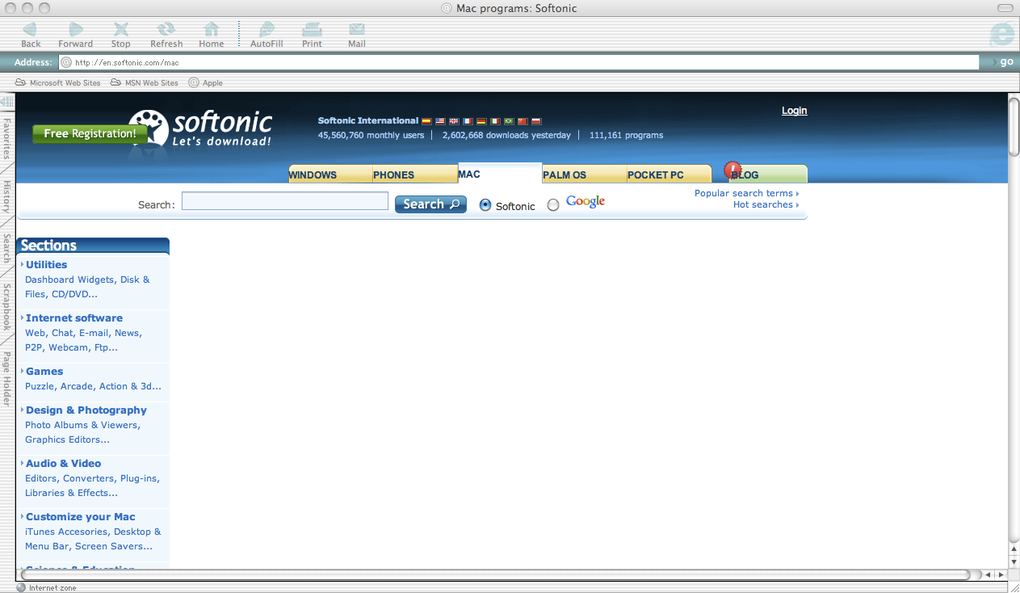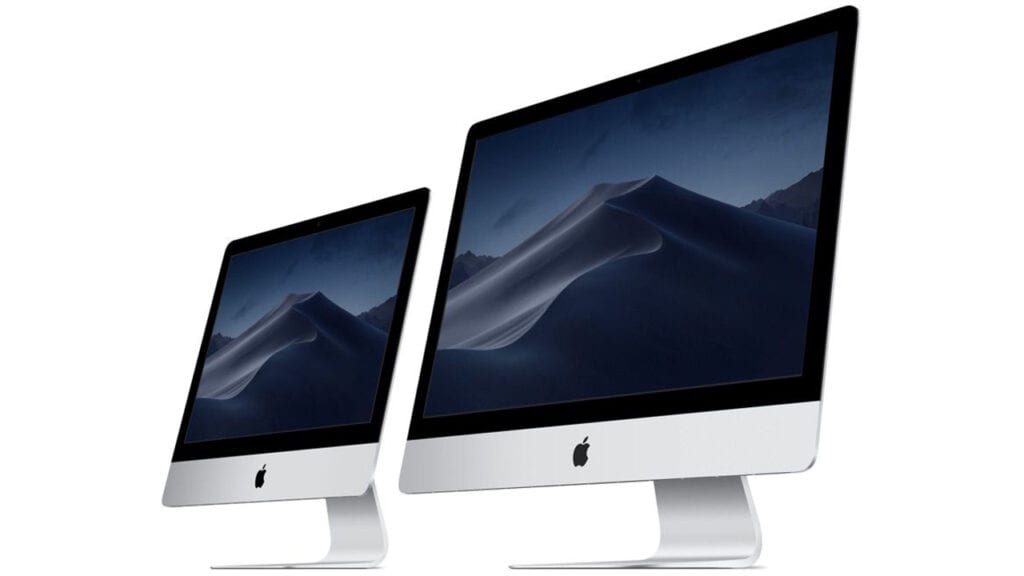
I E For Mac
You don't need to download and install Internet Explorer 11 in Windows 10 because it's already installed. Turn your phone or tablet into a book with the free Kindle apps for iOS, Android, Mac, and PC. Read anytime, anywhere on your phone, tablet, or computer. Go beyond paper with immersive, built-in features.
This directory contains binaries for a base distribution and packages to run on Mac OS X (release 10.6 and above). Mac OS 8.6 to 9.2 (and Mac OS X 10.1) are no longer supported but you can find the last supported release of R for these systems (which is R 1.7.1) here. Releases for old Mac OS X systems (through Mac OS X 10.5) and PowerPC Macs can be found in the old directory.
Note: CRAN does not have Mac OS X systems and cannot check these binaries for viruses.Although we take precautions when assembling binaries, please use the normal precautions with downloaded executables.
Package binaries for R versions older than 3.2.0 are only available from the CRAN archive so users of such versions should adjust the CRAN mirror setting (https://cran-archive.r-project.org) accordingly.
R 3.6.3 'Holding the Windsock' released on 2020/02/29
Important: since R 3.4.0 release we are now providing binaries for OS X 10.11 (El Capitan) and higher using non-Apple toolkit to provide support for OpenMP and C++17 standard features. To compile packages you may have to download tools from the tools directory and read the corresponding note below.
Please check the MD5 checksum of the downloaded image to ensure that it has not been tampered with or corrupted during the mirroring process. For example type
md5 R-3.6.3.pkg
in the Terminal application to print the MD5 checksum for the R-3.6.3.pkg image. On Mac OS X 10.7 and later you can also validate the signature using
pkgutil --check-signature R-3.6.3.pkg
Latest release:
| R-3.6.3.pkg (notarized, for Catalina) SHA1-hash: 2677aaf9da03e101f9e651c80dbec25461479f56 (ca. 77MB) R-3.6.3.nn.pkg (regular) Microsoft office 2007 for mac free download - Microsoft Office 2008 update, Microsoft Office 2011, Microsoft Office 2016 Preview, and many more programs. Microsoft office 2007 download. Installing Office 2007 on Mac I purchased and installed my Office 2007 Home and Student version on my PC but just got a Mac and want to install the same version. I don't have the disk but I have my product key. Can a link to the 2007 Mac version of Office be sent to me so I can enjoy Office on my Mac? Download free office suite - download LibreOffice for Windows, macOS (Mac OS X), Linux. Originally based on OpenOffice.org. | R 3.6.3 binary for OS X 10.11 (El Capitan) and higher, signed package. Contains R 3.6.3 framework, R.app GUI 1.70 in 64-bit for Intel Macs, Tcl/Tk 8.6.6 X11 libraries and Texinfo 5.2. The latter two components are optional and can be ommitted when choosing 'custom install', they are only needed if you want to use the tcltk R package or build package documentation from sources. macOS Catalina users must use notarized version which enforces hardened run-time. All others can use regular version which uses the same runtime as previous R releases. R 3.6.2 was the last version that can be run on Catalina with regular runtime. Note: the use of X11 (including tcltk) requires XQuartz to be installed since it is no longer part of OS X. Always re-install XQuartz when upgrading your macOS to a new major version. Important: this release uses Clang 7.0.0 and GNU Fortran 6.1, neither of which is supplied by Apple. If you wish to compile R packages from sources, you will need to download and install those tools - see the tools directory. |
| NEWS (for Mac GUI) | News features and changes in the R.app Mac GUI |
| Mac-GUI-1.70.tar.gz MD5-hash: b1ef5f285524640680a22965bb8800f8 | Sources for the R.app GUI 1.70 for Mac OS X. This file is only needed if you want to join the development of the GUI, it is not intended for regular users. Read the INSTALL file for further instructions. |
Note: Previous R versions for El Capitan can be found in the el-capitan/base directory.Binaries for legacy OS X systems: | |
| R-3.3.3.pkg MD5-hash: 893ba010f303e666e19f86e4800f1fbf SHA1-hash: 5ae71b000b15805f95f38c08c45972d51ce3d027 (ca. 71MB) | R 3.3.3 binary for Mac OS X 10.9 (Mavericks) and higher, signed package. Contains R 3.3.3 framework, R.app GUI 1.69 in 64-bit for Intel Macs, Tcl/Tk 8.6.0 X11 libraries and Texinfo 5.2. The latter two components are optional and can be ommitted when choosing 'custom install', it is only needed if you want to use the tcltk R package or build package documentation from sources. Note: the use of X11 (including tcltk) requires XQuartz to be installed since it is no longer part of OS X. Always re-install XQuartz when upgrading your OS X to a new major version. |
| R-3.2.1-snowleopard.pkg MD5-hash: 58fe9d01314d9cb75ff80ccfb914fd65 SHA1-hash: be6e91db12bac22a324f0cb51c7efa9063ece0d0 (ca. 68MB) | R 3.2.1 legacy binary for Mac OS X 10.6 (Snow Leopard) - 10.8 (Mountain Lion), signed package. Contains R 3.2.1 framework, R.app GUI 1.66 in 64-bit for Intel Macs. This package contains the R framework, 64-bit GUI (R.app), Tcl/Tk 8.6.0 X11 libraries and Texinfop 5.2. GNU Fortran is NOT included (needed if you want to compile packages from sources that contain FORTRAN code) please see the tools directory. NOTE: the binary support for OS X before Mavericks is being phased out, we do not expect further releases! |
Subdirectories:
| tools | Additional tools necessary for building R for Mac OS X: Universal GNU Fortran compiler for Mac OS X (see R for Mac tools page for details). |
| el-capitan | Binaries of package builds for OS X 10.11 or higher (El Capitan build) |
| mavericks | Binaries of package builds for Mac OS X 10.9 or higher (Mavericks build) |
| old | Previously released R versions for Mac OS X |
You may also want to read the R FAQ and R for Mac OS X FAQ. For discussion of Mac-related topics and reporting Mac-specific bugs, please use the R-SIG-Mac mailing list.
Information, tools and most recent daily builds of the R GUI, R-patched and R-devel can be found at http://mac.R-project.org/. Please visit that page especially during beta stages to help us test the Mac OS X binaries before final release!
Package maintainers should visit CRAN check summary page to see whether their package is compatible with the current build of R for Mac OS X.
Binary libraries for dependencies not present here are available from http://mac.R-project.org/libs and corresponding sources at http://mac.R-project.org/src.
Last modified: 2020/03/07, by Simon Urbanek
Once upon a time, Internet Explorer was the default browser on all Apple Mac devices. Until 2003, when Apple released Safari, which eventually resulted in Microsoft discontinuing any support for Internet Explorer for Mac from 2005 onwards.
After that, the agreement that Apple and Microsoft was dissolved and any download links from official sites were removed. Getting IE or a newer Microsoft browser, Edge, on a Mac, simply isn't possible unless you want to download a potentially risky version from Torrent sites (not recommended).
So unless you are still running Mac OS X 10.6 (Snow Leopard) and earlier versions, you won't be able to get and operate Internet Explorer, and the only versions you might be able to access have been unsupported since 2005.
For anyone with a passing familiarity with computers, that sounds like a major security breach waiting to happen. You don't want to be attempting to run a browser that hasn't benefited from any official support and upgrades for over a decade; so for those who need access to IE, this article is about how to get Internet Explorer for Mac.
How to get Internet Explorer for Mac?
As we mentioned, IE and Microsoft’s more evolved browser, Edge, is not directly available for Mac users. It isn't as though there aren't plenty of other browsers around, including Safari, Firefox and Chrome.
However, for those who develop apps and web-based technology, it can be useful - if not essential - to view how something is going to look and function on other web browsers, including Internet Explorer. It could be detrimental, especially if you've got users or customers of a web-based product, to launch it with no knowledge or testing of the user-experience across a range of browsers, including Internet Explorer.
Thankfully, there is a way to simulate having Internet Explorer on a Mac without downloading a security risk or using a Mac which is running Snow Leopard. Here is how you can get Internet Explorer on a Mac:

- Open Safari (this can be used to test the browser experience from other operating systems)
- Go to Preferences > Advanced
- At the bottom of this is a checkbox: Tick it: “Show Develop menu in menu bar”
- Now this gives you access to Developer Tools (known as the Develop menu in Safari’s menu bar);
- The Develop Menu is accessible through the top toolbar when Safari is open
- Go to User Agent
- Within that, you should be able to select a number of Internet Explorer and Edge browser versions to experience on a Mac, which should give you the user-experience required to test a new web-based product on those browsers on a Mac
- Whatever website you are on will automatically refresh to mirror an IE or Edge experience, on Mac. Do remember to switch back to Safari after you’ve visited that website using the User Agent option in the Develop menu.
If, for any reason, you need to take the IE experience to the next level on a Mac, you could download a virtual machine (such as VMware Fusion, which has a Windows license), therefore creating a Microsoft environment on a Mac, which would allow you to download Internet Explorer.
Before you do that, it can be useful to make sure your Mac is running at peak performance and not cluttered up with unwanted system junk. Here is how you can do that:
- Download CleanMyMac X (for free, here)
- Click on the Systems Junk tab
- Once your systems have been scanned, you can safely delete anything taking up space and slowing your Mac down.
Run Internet Explorer on a virtual machine
For those who need to take this one step further, here is how you can use Internet Explorer and run other Microsoft programs.
- Buy and download virtual machine software (such as VMware fusion)
- Now download a Windows ISO file (from the relevant Microsoft website)
- Launch VMware Fusion
- During the installation sequence, click “Create a new custom virtual machine”
- Drag and drop the Windows ISO file into the dialogue window
- Click Finish
- Then relaunch the Virtual Machine
- Now you can download Internet Explorer, Edge and any number of web or app-based Microsoft products.
When you want to go back to running software on macOS, remember to close the virtual machine and revert to your Mac how it usually is. For those who want to improve their overall Mac experience, the app we mentioned - CleanMyMac X - is well worth downloading. CleanMyMac X was created to make your life and work easier, and make your Mac operate as good as new.